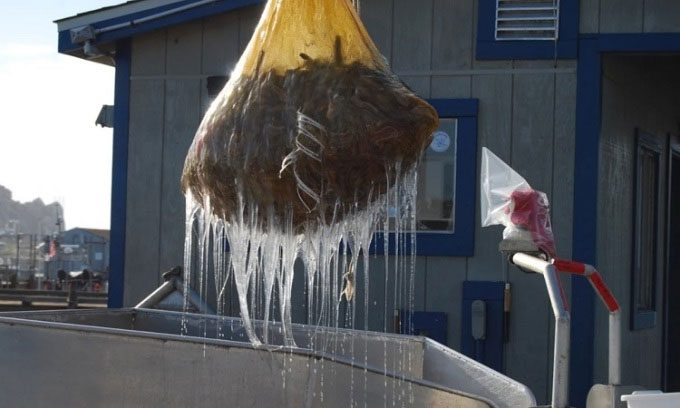Slime Eels Evolve Ability to Use Mucus as a Defense Mechanism, Clogging Predator Gills in Less Than a Second.
Slime eels (Myxinidae) are the slimiest creatures on the planet. The mucus they secrete can stretch up to 10,000 times in just 0.4 seconds. This defense mechanism is highly effective in preventing predators, such as sharks, according to IFL Science.

Mucus secreted by slime eels when fishermen pull them out of the water. (Photo: Flickr).
The mucus of slime eels is formed when seawater interacts with two different substances secreted by their mucus glands, including rapidly expanding mucus sacs that burst in water, creating a sticky fiber network. This type of fiber is known as intermediate filaments (IF). The IF fibers are only 12 nanometers wide but can be as long as 15 cm. They are arranged in bundles resembling strands of wool, referred to as coil fibers.
To explore the mystery of slime eel mucus, a research team from the University of Illinois studied how the fiber cells behave when exposed to seawater in a paper published in 2019. They discovered that the coil fibers begin to unravel during the time predators attack (100 – 400 milliseconds). This time frame can be even shorter if the coil fibers attach to a surface, such as the mouth of a predator.
The coil fibers can expand up to 10,000 times their original size, creating a fiber network that mucus sacs can connect to, forming a gelatinous mass that is difficult to deal with. Contact with seawater accelerates this transformation, as the seawater dissolves the protein glue that holds the coil fibers together, releasing stored elastic energy.
Slime eels are challenging prey for predators, but they can sometimes cause problems for humans as well. In 2017, a woman driving a truck carrying 3,400 kg of slime eels was signaled by traffic police to stop. However, sudden braking caused the tank of slime eels to spill onto the road. The slime eel’s defense mechanism was activated, creating a heap of slime that covered the road.


















































